This article is about a paper I handed over to former Prime Minister Howard during a seminar at the Australian Institute of International Affairs on 31/10/2017
Australia in Today’s World – some observations from former PM John Howard
https://aiiansw.tidyhq.com/public/schedule/events/16630-australia-in-today-s-world-some-observations-from-former-pm-john-howard
Flawed energy white paper June 2004 is root cause for Australia’s current electricity and gas crisis
But first let’s set a record straight on peak oil.
In response to your Energy White Paper of June 2004 (“Despite increasing demand for oil, there are sufficient reserves to supply world demand for around 40 years.” p 119) I advised you that the global crude oil peak might happen in your term 2004-2007. For example, I sent you a report of the US Army on peak oil. In May 2005 I personally challenged your Resource Minister Ian MacFarlane at a function in BP Solar in Homebush. He ran away saying: “I know when peak oil is”. After 3 years of exchanging letters you replied “I agree to disagree”.
We peak oilers were right and your government was wrong. By June 2007, crude oil production was lower than in 2005, not sufficient. The decline was caused by the North Sea, Saudi Arabia and many other countries. I published this graph in the Oildrum blog in October 2007:
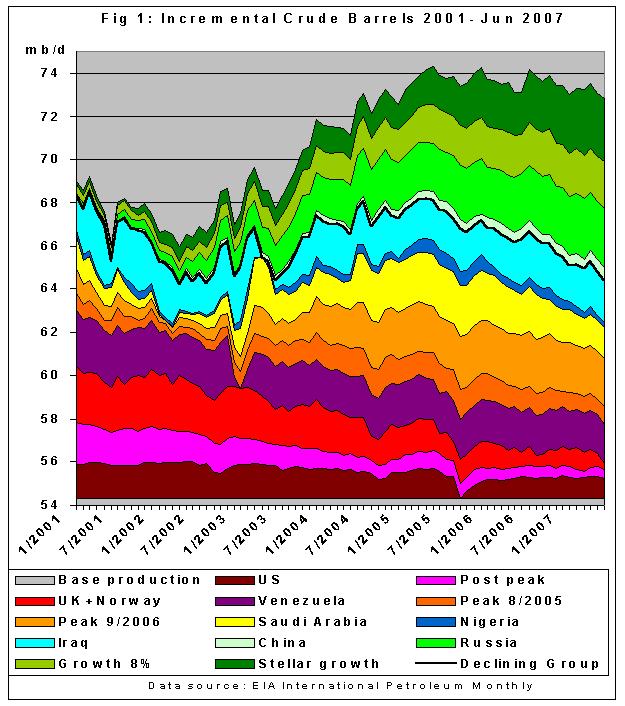 9/10/2007 Did Katrina hide the real peak in world oil production? http://www.theoildrum.com/node/3052
9/10/2007 Did Katrina hide the real peak in world oil production? http://www.theoildrum.com/node/3052
In 2007/08 it was totally irrelevant that oil production would increase again (i.e from US shale oil). What matters is not what oil companies write in their reserve books but what the actual annual (and even monthly) oil flows are. If they are not sufficient at any given time the financial system and the economy get a heart attack with PERMANENT damage (debt, budget deficits, company closures).
Mid 2008, China went on the oil market with an extra 800 kb/d demand in preparation for the Olympic Games. This was prudent because China had already experienced diesel shortages in 2005, clearly a turning point.

.
Petrol shortages in China 2005
James Hamilton wrote in his April 2009 research:
Causes and Consequences of the Oil Shock of 2007-08
“Whereas historical oil price shocks were primarily caused by physical disruptions of supply, the price run-up of 2007-08 was caused by strong demand confronting stagnating world production….. Eventually, the declines in income and house prices set mortgage delinquency rates beyond a threshold at which the overall solvency of the financial system itself came to be questioned, and the modest recession of 2007:Q4-2008:Q3 turned into a ferocious downturn in 2008:Q4.”
http://econweb.ucsd.edu/~jhamilto/Hamilton_oil_shock_08.pdf
In hindsight we can say that the event sequence 2005-2008 was the 1st phase of the global peaking (as a process). Worse is to come once US shale oil peaks and decline in other countries sets in due to lack of CAPEX.
In 2002, George Bush and Dick Cheney (Halliburton CEO) knew about the approaching crude oil peak. Of course, fracking technology was known to them. It was already promoted by President Ford during the oil crises of the 1970s. But George Bush could not imagine that oil prices would go so high that fracking would start a shale oil boom (which is actually a retirement party – see below). That’s why Iraq was invaded. Historically, Iraq had (and still has) underproduced oil (land-locked during Iran/Iraq war, oil for food sanctions under Saddam Hussein) so depletion levels were low compared to Saudi Arabia and Iran.
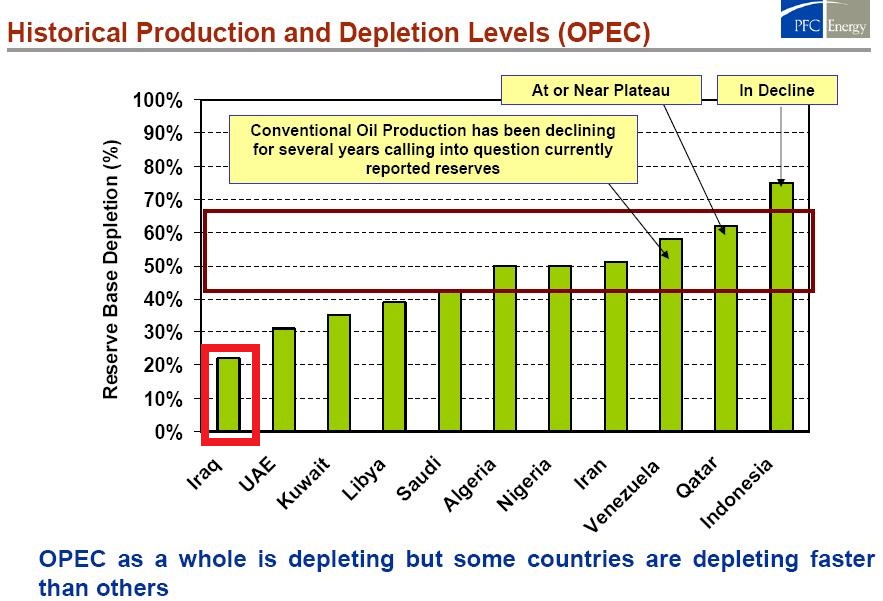
Slide shown by PFC Energy at the Centre for Strategic and International Studies (CSIS) in Washington, October 2004. Iraq had a low depletion level of 22%.
Saddam had to be removed so the lifting of sanctions could unlock Iraqi pre-peak oil with the objective to push the global peak a couple of years into the future.
Failure to advise State governments
I also advised Campbell Newman in 2006 NOT to build the Clem7 road tunnel because of peak oil. He replied there will be a 70 year long transport revolution and ignored it. The revolution lasted only a couple of years and the tunnel collapsed financially due to embellished traffic projections which did not take into account higher oil prices. The same happened with Brisbane’s airport link tunnel. Investors lost billions of dollars. Your government should have warned State governments about new oil dependent infrastructure. You inaugurated the M7. Transurban now sits on $16 bn debt. In the next credit freeze they will be a case of too big to fail.
Federal budget deficit
As can be seen from Hamilton’s paper, the oil price shock caused the GFC. This, in turn, substantially reduced company tax income and caused 80% of the Federal Government budget deficit:
 80% of Australian budget deficit comes from lower company tax revenue after GFC http://crudeoilpeak.info/80-of-australian-budget-deficit-comes-from-lower-company-tax-after-gfc-part-3
80% of Australian budget deficit comes from lower company tax revenue after GFC http://crudeoilpeak.info/80-of-australian-budget-deficit-comes-from-lower-company-tax-after-gfc-part-3
Response of System to conventional oil peak
The response to high oil prices was lower interest rates and money printing (in the US QE1-QE3. Cheap money financed shale oil investments. But the shale business is actually not viable:

August 2017: https://www.bloomberg.com/news/articles/2017-08-08/shale-exploration-production-company-earnings-confidence-game
In the worst case scenario, financial losses in the oil industry could trigger the next financial crisis. If oil prices do not go up sustainably in the next 2-3 years it is entirely possible that we are in post conventional oil peak collapse mode – in slow motion. And governments are still building oil dependent transport infrastructure while no alternative transport fuel or energy is in place.
Gas and electricity
Quotes from your EWP 2004:
“Australia’s gas reserves are sufficient for more than 100 years at current production levels, or more than 200 years of current domestic consumption”
“Predictions are made that supplies of gas to major urban markets will run short in the next decade, as production in the Cooper Basin and Bass Strait declines. This has resulted in calls for financial support towards the building of major pipelines from either the Northern Territory (to access gas from Sunrise and other Timor Sea fields), Papua New Guinea or north-west Australia (to access gas from either Carnarvon or Browse Basins). While reserves of gas in existing fields close to southeast markets are declining, this does not represent an energy security concern. Exploration is occurring in the south-east and is resulting in new discoveries and development, such as in the Otway Basin. The development of coal seam methane is also increasing supplies of gas in the region.”
“In addition, holders of the large remotely located gas reserves are actively seeking markets to monetise these reserves. These efforts include actively investigating pipeline projects for bringing supplies of gas from north and north-west sources, as well as seeking LNG export sales in Asian markets. The number and activity of these competing proposals provide a degree of confidence that these supplies will become available once economic, noting that this will in all likelihood occur at higher price levels than those currently enjoyed in some south-eastern markets.”
These were self-defeating, imprudent arguments for no-action. The conclusion should have been:
Despite the likelihood of new gas discoveries in Otway etc. the conventional gas production will ultimately peak and decline. Coal seam gas (or alternatively a gas pipeline from the West or North – no costings were done in the EWP) is more expensive and will damage our industries. Therefore, we need a new source of energy.
The UMPNER report was done in 2006
http://www.ansto.gov.au/__data/assets/pdf_file/0005/38975/Umpner_report_2006.pdf
but why did you not seriously try to convince the public it was needed? The report came to the conclusion that it would take 15 years to develop nuclear power. That would have brought us to the year 2022, when Liddell is closing. What an irony.
There are not many technical solutions to solve the problem of intermittent renewable energies like wind and solar. You could have already started Snowy 2 with pumped storage. Market forces alone will do nothing. Companies will just close down when they are no longer viable (examples refineries – Shell/BP/Chevron peak oil, car manufacturing, Hazelwood)
The flawed energy white paper 2004 comes back in 2017 and hits Malcolm Turnbull like a boomerang:
20/10/2017 Australia’s east coast gas crisis will be permanent http://crudeoilpeak.info/australia-east-coast-gas-crisis-will-be-permanent
 Peak conventional gas on the east coast. Peak gas – what a terrible word.
Peak conventional gas on the east coast. Peak gas – what a terrible word.
Coal seam gas is wasted in LNG exports, energy equivalent to Australia’s total petroleum liquids consumption
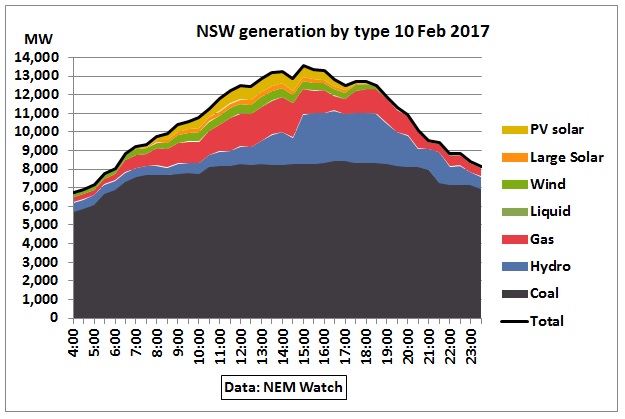 NSW power generation profile on a hot day. Coal is NOT dispatchable to cover the peak demand.
NSW power generation profile on a hot day. Coal is NOT dispatchable to cover the peak demand.
Access to resources
Australia’s access to domestic energy resources is amongst the best in the developed world. Australia has sufficient stationary energy sources to meet its electricity and heating needs for hundreds of years, significant petroleum resources, and good access to imported petroleum products. (p 20, EWP 2004) http://www.efa.com.au/Library/CthEnergyWhitePaper.pdf
Just 13 years later……300 MW load shedding of Tomago aluminium smelter, a catastrophic failure.

14 Feb 2017 NSW’s privatized giveaway coal plant causes load shedding in extreme weather http://crudeoilpeak.info/nsws-privatized-giveaway-coal-plant-causes-load-shedding-in-extreme-weather
Question: Why are there so many oil/gas/energy illiterate bureaucrats and consultants in the Prime Minister’s office and in Energy/Resource departments?
Will you have a meeting with Energy Minister Frydenberg and Malcolm Turnbull so that professionally qualified geologists and energy planners are employed with the objective to audit the books of the oil and gas industry? Instead of depending on information from them?
Appendix
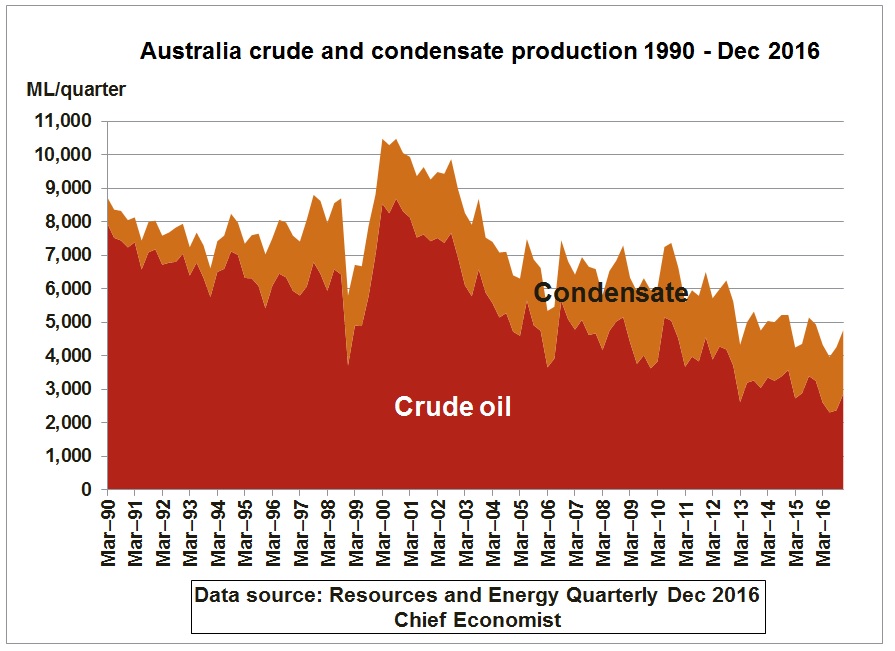 Peak oil in Australia
Peak oil in Australia
Peak oil in IOCs

16/10/2016 Royal Dutch Shell’s upstream earnings peaked 2008, now in the red
http://crudeoilpeak.info/royal-dutch-shells-upstream-earnings-peaked-2008-now-in-the-red
.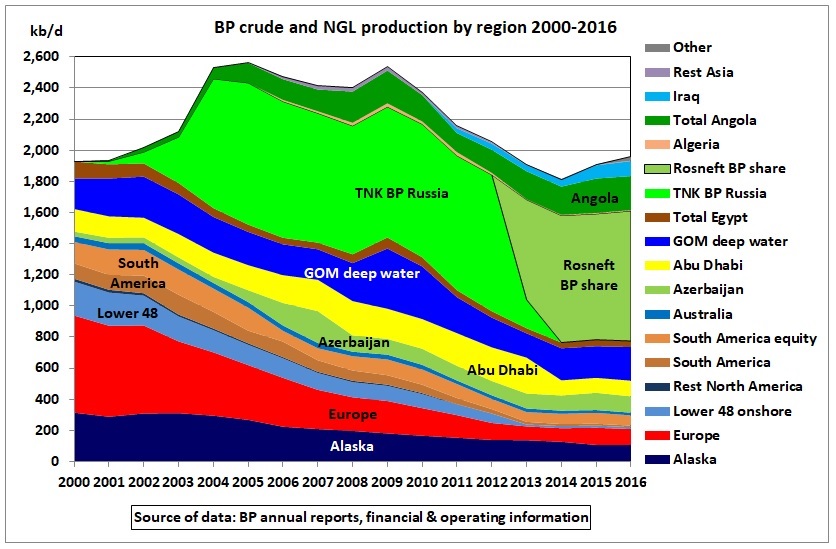 9/4/2014 Why the closure of BP’s Brisbane Bulwer refinery reduces Australia’s energy security
9/4/2014 Why the closure of BP’s Brisbane Bulwer refinery reduces Australia’s energy security
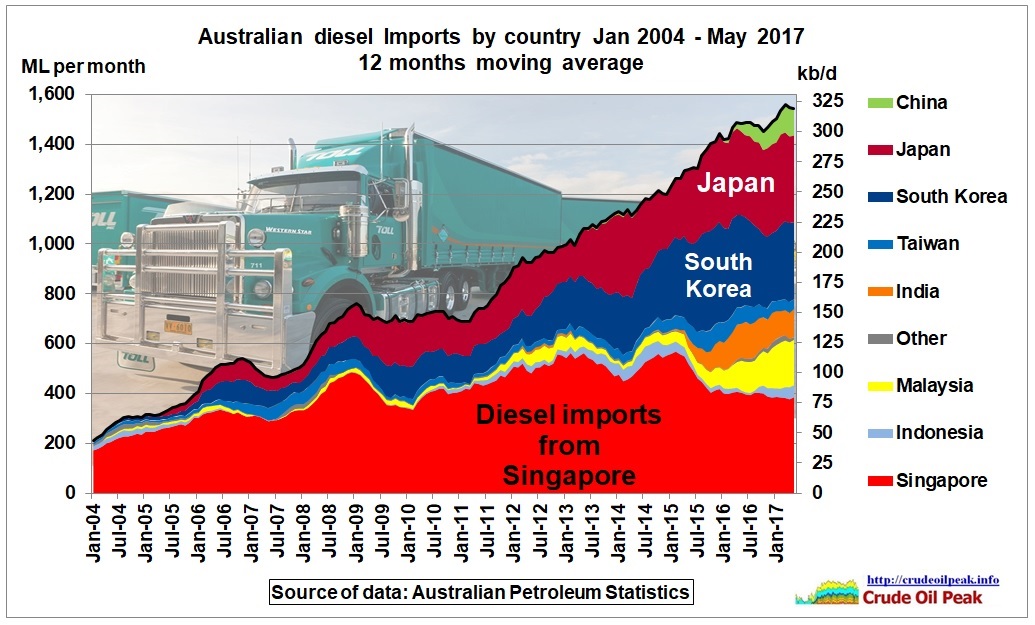 .
.
 .
.

1 Scud missile on Ulsan – tankers stop and we start walking. Thank you, all Australian governments who made us more vulnerable.
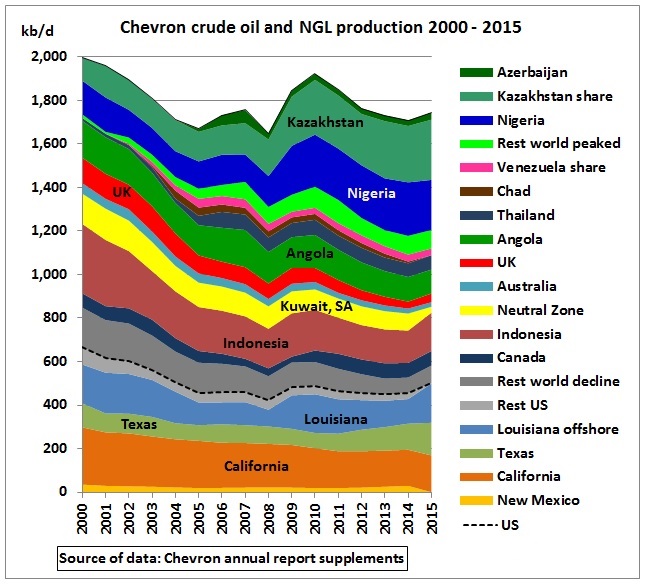 .
.